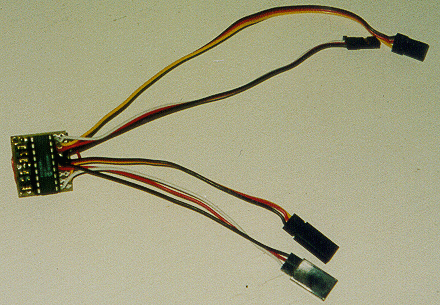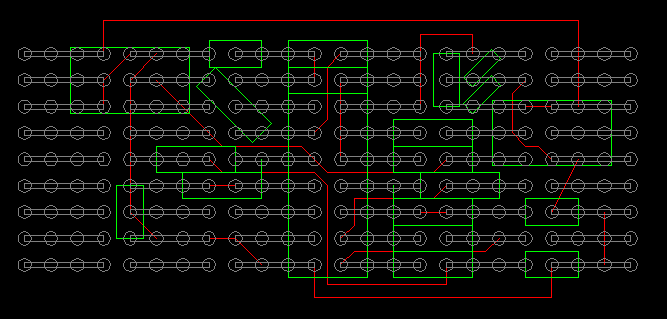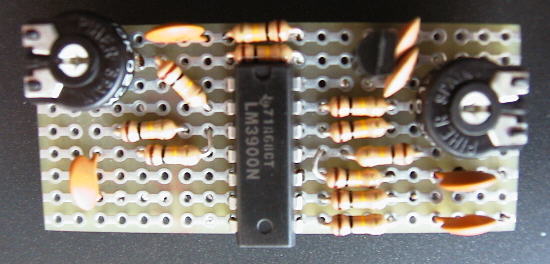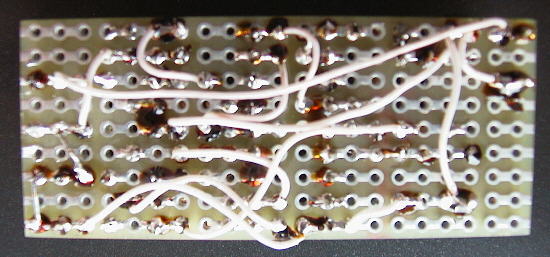
This page describes mixers I made for small flying wing I'm building. If you have any comments or suggestions please send me an e-mail.
Arne Ansper <arne@cyber.ee>
I have Hitec Focus 4AM radio. This is a non-computer radio without mixing function that is required for elevons. After some digging I found a free PIC based mixer designed by Eagle Air Australia (look under Software, Sample Application #5). This is very simple and cheap design: just PIC and resonator. Friend of mine has a PIC programmer for PC and all the required programs (actual mixer program for PIC, assembler and programmer for PC) are available in Internet free of charge.

I used small piece of modeling PCB with predrilled holes and copper tracks. I put PIC into socket so that I can easily reprogram it if needed. The jumpers are from old PC motherboard and allow to change the mixing ratio, mixing mode (with or into) and reverse the servo direction.
It weighted 13 grams. I thought that it is too heavy and I didn't like the mess of the servo wires. I rebuilt the mixer without the PCB and with shorter wires. It weighted 6 grams but was still very ugly.
I found an alternative approach to mixing: Elevon Mixer for Transmitters.
Ths mixer goes into the transmitter, so the weight is not important. There is no mess of wires in the plane. And the mixer is actually a small analog computer :)
First I measured all available space inside my transmitter. There was really very few places where I could fit the mixer. The maximum size was 22mm x 56mm. I bought all necessary components (they cost me $6 :), measured the positions of their pins and made a small drawing using IntelliCAD 2001. Soldering and assembling was real fun and I was really satisfied with the result.

Layout of the mixer PCB. Soldering pads are grey, components are green, wires (on the other side of the PCB) are red.

Top of the assembled PCB.

Bottom of the assembled PCB.
My suggestions:
First: the input voltage to the encoder chip must be between 2.0 and 3.1 volts. Centered stick gives out 2.55 volts. At least on my transmitter it's so. Measure it before you start tuning.